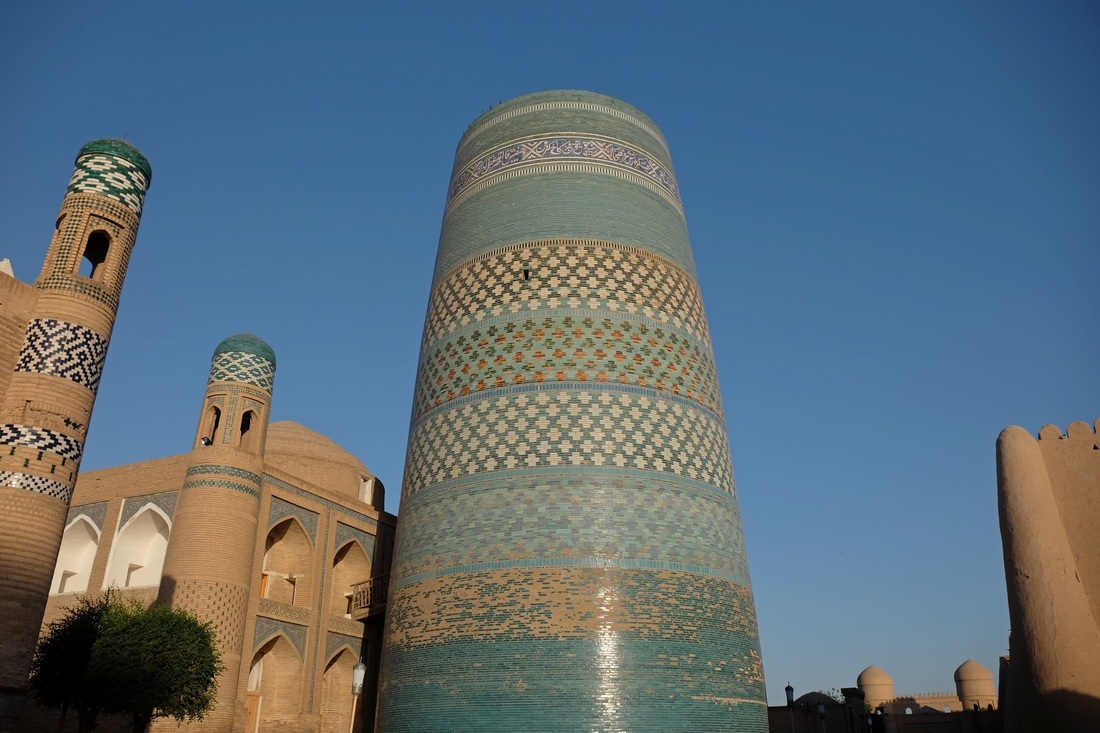The spectacularly stumpy Kalta Minor Minaret. It was meant to be Central Asia's tallest minaret at 76m, but construction abruptly halted at only 29m.
Legend has it that the architect had foolishly agreed to build an even taller one in the rival city of Bukhara. The Khan of Khiva, upon learning of this treachery, had the architect executed by flinging him off his own creation. Unfortunately for the architect, 29m wasn't high enough to kill him, so he was dragged up and repeatedly launched from the top until he finally did die.
Legend has it that the architect had foolishly agreed to build an even taller one in the rival city of Bukhara. The Khan of Khiva, upon learning of this treachery, had the architect executed by flinging him off his own creation. Unfortunately for the architect, 29m wasn't high enough to kill him, so he was dragged up and repeatedly launched from the top until he finally did die.
T plus 50 - Khiva (Uzbekistan)
Firstly, apologies, this should have been posted much earlier but the internet in Uzbekistan (then Turkmenistan) was so appalling that I put it off until now.
For a city of only 50,000 inhabitants, Khiva certainly has a fascinating history. One version of it states that the walled city was built by one of Noah's sons, Shem, after a vision of hundreds of burning torches came to him in his sleep after the great flood. He took this good omen so seriously that he had a city built according to the outline of the placement of the torches.
Its other claim to fame is slightly more sinister - Khiva was the slave trading capital of this region from the 6th right up to the 19th century. An account by a Russian envoy almost 200 years ago states that "Young Russian slaves may fetch up to eighty tillas whereas Persian slaves are much cheaper". Consequently the latter were sold in batches of 5,10 and 20, much like cattle.
In its present form, Khiva is a nice place to relax under the shadows of centuries-old minarets and mud-bricked walls which have hardly been restored, but have survived remarkably well given the conditions. It's not quite as touristy as Bukhara i.e. not as many souvenir shops and touts, and is often used as a base for jumping into Nukus for the Aral Sea, or to tour the 50 fortresses (Elliq Kala) in the Urgench vicinity.
The ancient city walls of Ichon Kala, the Old Town.
Ladies doing some carpet-cleaning against the Khiva skyline.
View of atop the city walls of Khiva's minaret and dome-dotted rooftops.
Not much happens in this sleepy town to have significantly altered the way of life of its inhabitants. It's as if time passes much more slowly within the walls of Khiva.
Kids hanging out near the North Gate.
A mother and her daughters walk home after an afternoon of marketing at the bazaar.
Spookily quiet within the walls of the Old City after twilight.










